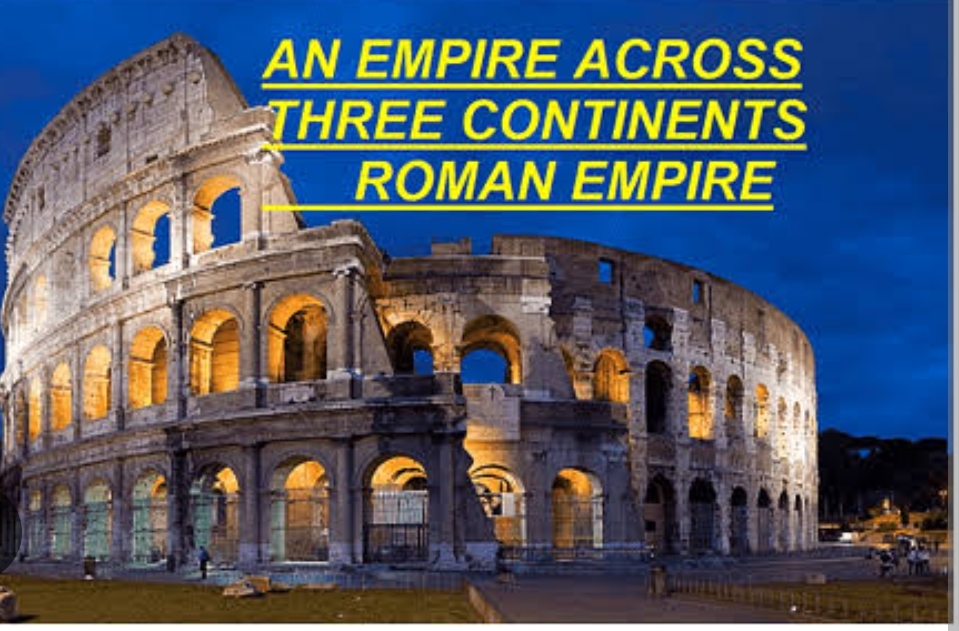Q1. Describe the geographical extent of the Roman Empire.
Answer:
The Roman Empire extended over a vast area, covering present-day Europe, North Africa, and West Asia. It stretched from Britain in the west to the Euphrates River in the east, and from the Danube River in the north to the Sahara Desert in the south. The Mediterranean Sea was at the heart of this empire, linking all its territories and facilitating trade, communication, and military control.
Q2. What were the features of the Roman army?
Answer:
The Roman army was highly organized and disciplined. It was divided into legions, each comprising about 5,000 soldiers. The soldiers were well-trained, equipped with standardized weapons, and followed strict discipline. The army built roads, forts, and camps, and played a key role in both expanding and protecting the empire. Military service also became a means for social mobility.
Q3. What was the role of the emperor in the Roman Empire?
:
The Roman emperor held supreme authority over the military, administration, and judiciary. He was considered the source of law and could issue edicts. The emperor also controlled the army, appointed governors, and supervised tax collection. Though the Senate continued to exist, real power rested with the emperor, especially after the first century CE.
Q4. Describe the role of the Senate in Roman governance.
Answer:
The Senate was a powerful political institution in early Rome, consisting of aristocratic members. It advised the consuls, passed decrees, and controlled public finances. However, after Augustus became emperor, the power of the Senate was reduced, and it became more ceremonial, with real authority shifting to the emperor.
Q5. How did trade and urbanization flourish in the Roman Empire?
Answer:
Trade flourished due to a strong network of roads and sea routes across the empire. Cities like Rome, Alexandria, and Antioch became important trade centers. The empire traded in grain, olive oil, wine, metals, spices, and luxury goods. Urbanization increased with the development of towns, marketplaces, and administrative centers.
Q6. Explain the administrative system of the Roman Empire.
उत्तर:
The Roman administrative system was centralized yet flexible. At the top was the emperor, who had ultimate control over civil and military affairs. The empire was divided into provinces, each governed by a governor appointed by the emperor or the Senate.
Governors were responsible for maintaining law and order, collecting taxes, and ensuring military security. The central administration in Rome oversaw the empire’s finances, judicial matters, and the appointment of officials.
The army played a crucial role in enforcing imperial authority and maintaining peace. Roman roads and a well-maintained postal system helped communication and administration. The legal system, based on Roman law, was uniform across the empire.
Despite central control, local customs and languages were respected to maintain stability. Thus, the Roman administration was effective in governing a vast and diverse empire for centuries.
Q7. Discuss the economy of the Roman Empire with reference to agriculture, trade, and slavery.
Answer:
The Roman economy was mainly agrarian, with most people engaged in farming. Large estates called latifundia were owned by wealthy aristocrats and worked by slaves. Crops like grain, olives, and grapes were grown extensively.
Trade was another important pillar of the economy. The Mediterranean Sea served as a major trade route. The empire exported wine, olive oil, pottery, and imported spices, silk, and gems from the East. Urban centers like Rome and Alexandria were major trading hubs.
Slavery was integral to the economy. Slaves worked in fields, households, mines, and even as teachers. War captives often became slaves. Their cheap labor boosted production, though over-reliance on slaves also caused economic problems later.
Taxes were collected in cash or kind and helped fund the military and public works. Thus, agriculture, trade, and slavery were interconnected and formed the backbone of the Roman economy.
Q8. Describe the social hierarchy of the Roman Empire.
Answer:
Roman society was highly hierarchical. At the top were the Senatorial and Equestrian classes, who owned vast lands and held political power. Below them were the citizens, who had legal rights, could vote, and serve in the army.
The plebeians were the common people—small farmers, artisans, and traders. Although citizens, they had fewer privileges than the elite. Over time, they gained some political power through assemblies and tribunes.
At the bottom were the freedmen (freed slaves) and slaves. Freedmen could own property and work but had limited rights. Slaves had no legal identity and were considered property. They performed labor in agriculture, construction, and domestic work.
This rigid hierarchy created social tensions, but also ensured order and stability in the vast empire.







